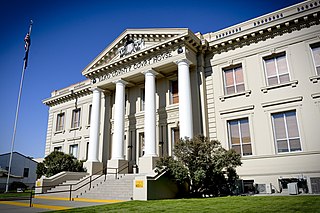
Elko County is a county in the northeastern corner of Nevada, United States. As of the 2020 census, the population was 53,702. Its county seat is Elko. The county was established on March 5, 1869, from Lander County. Elko County is the fourth-largest county by area in the contiguous United States, ranking lower when the boroughs of Alaska are included. It is one of only 10 counties in the U.S. with more than 10,000 square miles (25,900 km2) of area. Elko County is the second-largest county by area in Nevada, with only Nye County being larger. Elko County is part of the Elko micropolitan statistical area. It contains 49.8 percent of the Duck Valley Indian Reservation, set up in the late 19th century for the Shoshone-Paiute peoples; they are a federally recognized tribe. Although slightly more than 50% of the reservation is across the border in Owyhee County, Idaho, the majority of tribal members live on the Nevada side. The reservation's land area is 450.391 square miles (1,166.5 km2).
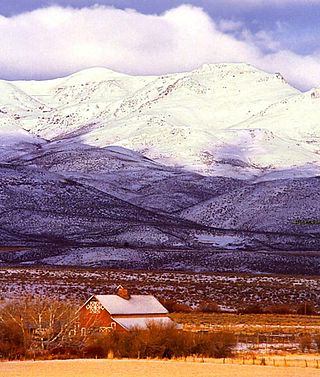
Owyhee County is a county in the southwestern corner of the U.S. state of Idaho. As of the 2020 census, the population was 11,913. The county seat is Murphy, and its largest city is Homedale. In area it is the second-largest county in Idaho, behind Idaho County. Owyhee County is part of the Boise metropolitan area and contains slightly more than half of the Duck Valley Indian Reservation, which extends over the Nevada border, into Elko County. The majority of the federally recognized Shoshone-Paiute Tribe that is associated with this reservation lives on the Nevada side; its tribal center is in Owyhee, Nevada.
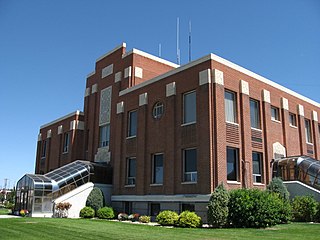
Cassia County is a county in the U.S. state of Idaho. As of the 2020 Census the county had a population of 24,655. The county seat and largest city is Burley. Cassia County is included in the Burley, ID Micropolitan Statistical Area.

Elko is a city in the U.S. state of Nevada and the county seat of Elko County. As of the official 2020 U.S. Census, the city has a population of 20,564. Elko serves as the center of the Ruby Valley, a region with a population of over 55,000. Elko is 21 miles (34 km) from Lamoille Canyon and the Ruby Mountains, providing year-round access to recreation, including hiking, skiing, hunting, and more than 20 alpine lakes. The city straddles the Humboldt River. Spring Creek, Nevada, serves as a bedroom community 6 miles (10 km) from the city with a population of 13,805.
The Shoshone or Shoshoni are a Native American tribe with four large cultural/linguistic divisions:

Lewis Rice "Broadhorns" Bradley was an American politician who was the second Governor of Nevada from 1871 to 1879. He was a member of the Democratic Party.
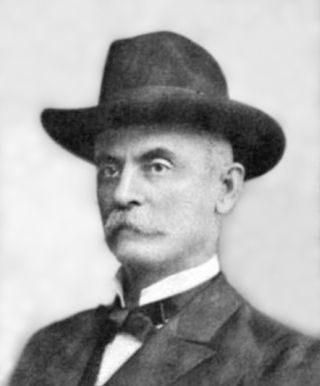
John Sparks, nicknamed Honest John, was an American politician who was the 10th Governor of Nevada. Like his predecessor, Reinhold Sadler, Sparks was a cattleman and his rise to political power was evidence of the decline of the mining industry and the rise of the ranching industry in Nevada. He was a member of the Silver – Democratic Party. In 1958, he was inducted into the Hall of Great Westerners of the National Cowboy & Western Heritage Museum.

A range war, also known as range conflict or cattle war, is a type of usually violent conflict, most commonly in the 19th and early 20th centuries in the American West. The subject of these conflicts was control of "open range", or range land freely used for cattle grazing, or as sheep pasture, which gave these conflicts its name. Typically they were disputes over water rights, grazing rights, or cattle ownership.

James Henry Hawley was an American attorney and politician from Idaho. He was the state's ninth governor from 1911 to 1913, and the mayor of Boise from 1903 to 1905. He also acted as prosecutor or defense attorney for a substantial number of criminal cases. Outside of criminal law, he specialized in irrigation and mining cases.

Basque Americans are Americans of Basque descent. According to the 2000 US census, there are 57,793 Americans of full or partial Basque descent.
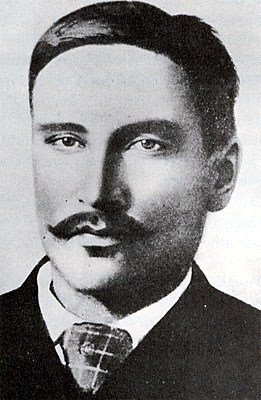
The Pleasant Valley War, sometimes called the Tonto Basin Feud, or Tonto Basin War, or Tewksbury-Graham Feud, was a range war fought in Pleasant Valley, Arizona in the years 1882–1892. The conflict involved two feuding families, the Grahams and the Tewksburys. The Grahams were ranchers, while the Tewksburys, who were part Native American, started their operations as cattle ranchers before branching out to sheep.

Sundown Slim is a 1920 American silent Western film starring Harry Carey.

Heaven with a Gun is a 1969 American Western film starring Glenn Ford and directed by Lee H. Katzin.

Jackson Lee "Diamondfield Jack" Davis was pardoned for the 1896 Deep Creek Murders in Idaho and would later strike it rich in Nevada, where he established several mining towns, one named after his nickname "Diamondfield".
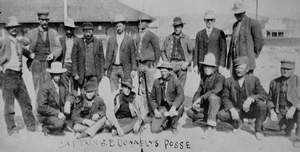
The Battle of Kelley Creek, also known as the Last Massacre, is often considered to be one of the last known massacres carried out between Native Americans and forces of the United States, and was a closing event to occur near the end of the American Indian warfare era. In January 1911 a small band of Shoshones were accused of rustling cattle and then killing four stockmen who went to investigate the dead cattle. A posse of policemen and citizens was sent to track the band, who were found encamped near Winnemucca, Nevada, in a region known as Kelley Creek. A largely one-sided battle ensued on February 25 that ended with the direct deaths of nine people, eight Daggetts and one posse member. At the time the affair was briefly characterized as a Native American revolt, though it is now mostly regarded as a family's attempted escape from law enforcement.
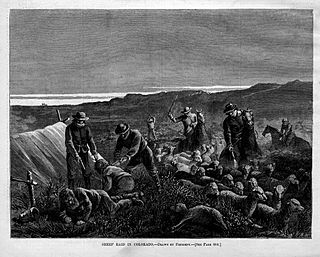
The sheep wars, or the sheep and cattle wars, were a series of armed conflicts in the Western United States fought between sheepmen and cattlemen over grazing rights. Sheep wars occurred in many western states, though they were most common in Texas, Arizona, and the border region of Wyoming and Colorado. Generally, the cattlemen saw the sheepherders as invaders who destroyed the public grazing lands, which they had to share on a first-come, first-served basis. Between 1870 and 1920, approximately 120 engagements occurred in eight states or territories. At least 54 men were killed and some 50,000 to over 100,000 sheep were slaughtered.

The Sheepshooters' War was an armed conflict fought in central and eastern Oregon. Like other range wars in the Old West, the war pitted cattlemen against sheepherders. Because the cattlemen were unwilling to share the open range with the sheepherders, due to concerns about overgrazing, they formed paramilitary organizations with the goal of eliminating the flocks of sheep and anyone who attempted to stop them. Between 1895 and 1906, the Sheepshooters, as they were called, slaughtered at least 25,000 sheep. A few men were also killed during gunfights or related incidents.

The Spring Creek raid, also known as the Tensleep Murders or the Tensleep Raid, occurred in 1909 and was the last serious conflict during the Sheep Wars in Wyoming, as well as the deadliest sheep raid in the state's history. On the night of April 2, the sheepherder Joe Allemand and four of his associates were encamped along Spring Creek, near the town of Ten Sleep, when a group of seven masked cattlemen attacked them. It remains uncertain as to whether or not an exchange of gunfire took place between the two parties, but evidence suggests that Allemand and two of his men were executed while the remaining two escaped unharmed. Two sheep wagons were also destroyed by fire and about two dozen head of sheep were shot to death. Seven men were arrested for the crime, two of whom turned state's evidence and were acquitted. The rest were found guilty and sent to prison for sentences ranging from three years to life in prison. The conviction of the Tensleep murderers effectively put an end to the killings on the open range and exemplified the arrival of law and order in a region that still retained its rugged frontier environment after the end of the 19th century. Although there continued to be sheep raids in Wyoming into the 1910s, there were no more deaths.

Yodelin' Kid from Pine Ridge is a 1937 American Western film directed by Joseph Kane and starring Gene Autry, Smiley Burnette, and Betty Bronson. Based on a story by Jack Natteford, the film is about the son of a Southeastern cattleman who becomes entangled in a war between the cattlemen and "turpentiners" who make their living harvesting pine tree sap.
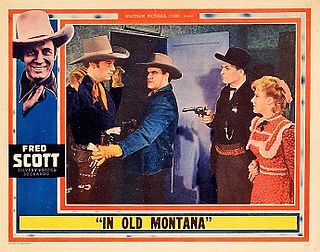
In Old Montana is a 1939 American Western film directed by Raymond K. Johnson and starring Fred Scott, Jean Carmen and John Merton. It is about the conflict existing between sheepherders and cattlemen in the nineteenth century.




















